Roote's wheeled tank
In 1939 the Royal Armoured Corps requested a reconnaissance armored car design from several manufacturers. Roote's group, then known as Karrier, was interested. While producing the Karrier KT 4 artillery tractor for the needs of the Indian army, the company identified the Guy Armoured Car's armored body as a fast solution to obtain a ready made suitable vehicle, with some adaptations. 101 Guy Armoured Cars had been already built from 1939 to 1940, but the company was not capable to muster a higher production rate. In particular, the Guy Mk.IA, equipped with a 15 mm (0.59 in) Besa heavy machine-gun, was the design basis for the Humber.Design
The chosen chassis, the Karrier KT4, was installed under the Guy armored body, copied down to the various defects (at least on the Mk.I). The turret was a two-men model, inspired by the one on the Mk.VI light tank, with a long barrel 15 mm (0.59 in) Besa machine gun which was derived (basically a scaled up version) from the common, compact cal.303 (7.92 mm) Besa machine gun. This weapon had some capabilities against 10-15 mm (0.39-0.59 in) of armor, and a good rate of fire, but had some defects as well. The armored body was sloped with a high driver compartment. The turret and fighting compartment were at the center.There were two reinforced armored hatches on both lower sides, and additional storage compartments, which procured some extra protection, as well as a spare roadwheel fastened on the front glacis. The Rootes engine was at the rear. It was dependable, but modifications were soon made to the ventilation grids, for North African service.
Evolution
The Mark I (1940)
was the basic version, derived from the Guy Armoured Car. The armor was somewhat faultily adjusted, but these defects were corrected during production. 300 units of this type were built.The Mark IA, or quad AA, was the anti-aircraft version, fitted with an open quartet of 7.92 mm (0.303 in) BESA machine guns with an adapted sight. These were to provide air cover for recce units, but Allied air superiority meant they were not needed, and only a handful were produced.
The Mark II (1941)
was an upgrade, with some changes made to the turret, radiator, and a completely redesigned frontal glacis armor.The Mark IIOP was a sub-variant "Observation Post", with two 7.92 mm (0.303 in) Besa machine-guns in the turret, to make room for extra equipment.
The Mark III
was a significant upgrade, with a wider, rear-extended turret conceived for three men, in order to accommodate a wireless operator, freeing the commander from this task. This allowed the fitting of heavier armament. A sub-variant eliminated the gun (replaced by a dummy) to make room for an extra Wireless No. 19 High Power radio and its generator, in order to operate as a mobile HQ. 1650 were produced between 1941 to 1942.The Fox Armoured Car was a Canadian-built version of the Mark III.
The Mark IV
was the final and best upgrade, and also the biggest variant production, from 1942 to 1945. The crew reverted to three due to the adoption (in the same three-man turret), of a larger gun, the US-made M5 or M6 37 mm (1.46 in) gun. Meanwhile, a better model, the Coventry Armoured Car, was being developed, but was later abandoned). The turret hatches and internal layout was also rearranged. 2000+ were produced.The Humber Armoured Car in action
This vehicle had a long career, which started in Great Britain in late 1940, and this vehicle was deployed in North Africa by the end of 1941, in growing numbers. The 11th Hussars and other units employed it for its main purpose, reconnaissance. In several theaters of operation, notably in Eastern Africa, the Humbers took a more offensive role, with long range raids and patrols. In Europe, they were used by British & Canadian units, organically attached to the armoured divisions, soldiering in Italy, France and the Low Countries. Others were deployed to patrol the Iranian supply route, or were attached to Indian divisions operating in Burma against the Japanese (like the 16th Light Cavalry).After the war, surplus Humbers were sold to Egypt (1948–49), Burma, Ceylon, Cyprus, Denmark, India, Mexico, the Netherlands and Portugal. A testimony to their sturdiness and reliability. In Indian service, the Humbers participated in Operation Polo in 1948 (annexation of the Hyderabad state) and formed the president bodyguard convoy escort, during the 1962 Indo-China War expedition in the defense of the Chushul heights.
Links about the Humber Armoured Car
The Humber AC on WikipediaThe Humber and Fox on Warwheels.net
Extra photos on Wikimedia Commons
Surviving Humber and Fox ACs by the Shadocks (pdf)
Humber Armoured Car specifications |
|
| Dimensions | 15.1 x 7.3 x 7.1 ft.in (4.6 x 2.2 x 2.3 m) |
| Total weight, battle ready | 5 tons (11,023 lbs) |
| Crew | 3/4 (driver, commander/gunner, loader) |
| Propulsion | Rootes 6 cyl petrol engine, 90 hp (67 kW), 12.9 hp/tonne |
| Suspension | 4x4 rigid axles, rear drive |
| Speed (road) | 50 km/h (80 mph) |
| Range | 200 miles (320 km) |
| Armament | 0.59 in (15 mm) Besa machine gun or 37 mm (1.46 in) US M5/M6 Secondary: 0.303 (7.92 mm) Besa machine gun |
| Armor | 15 mm front, 10 mm bottom, top (0.39-0.59 in) |
| Total production | Around 5400 in 1939-1945 |
Humber Armoured Car Gallery


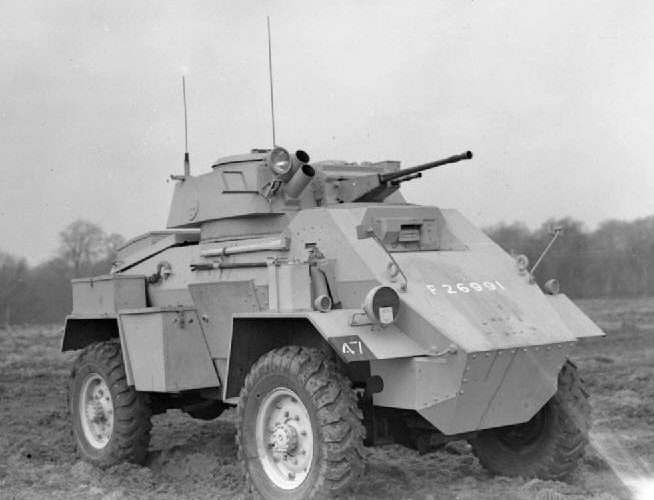





Credits: Wikimedia commons.
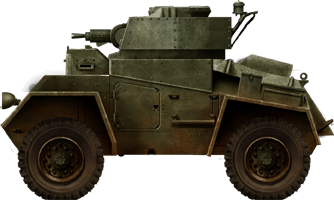
The Guy Armoured Car in 1939, predecessor of the Mark I.
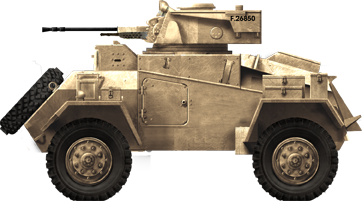
Humber Mark I, North Africa, 1941.
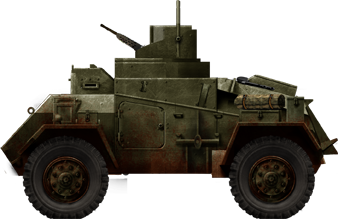
Humber Mark IA, Great Britain, 1942
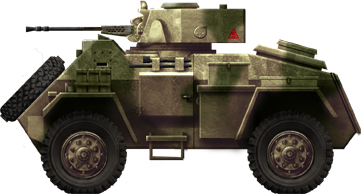
Humber Mark II, Italy, early 1944.
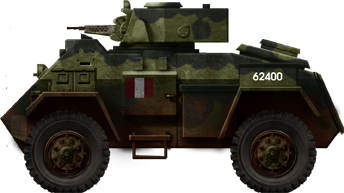
Canadian Humber Mark II in France, mid-1944. Notice the 15 mm\s short barrel.
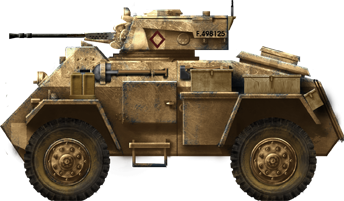
British Mark III in Tunisia, early 1943.
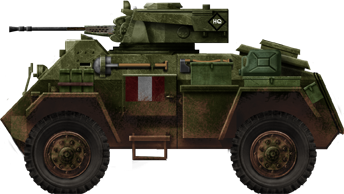
Humber Mark III attached to the recce battalion of the 1st Polish Armoured division, Normandy, June 1944.
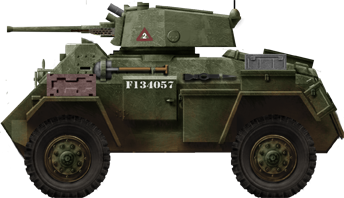
Humber Mark IV "Laughing Boy III", from a British unit, The Netherlands, fall 1944.
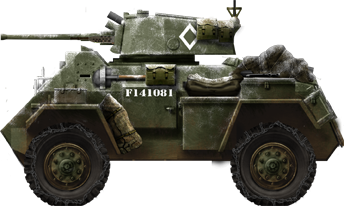
British Mark IV in the Rhineland, winter 1944-45.

WW2 Tanks




























WW2 tanks posters

All Tiger tanks liveries.

Panther liveries and variants

WW2 Armour - All tanks











Tanks aces and single tanks series

Find more there

Museums, Movies, Books & Games
The Tanks and Armor in pop culture
Tanks and armored vehicles in general are only really grasped when seen first person: The mass, the scale, it's all there. Explore also the way tanks were covered in the movie industry, in books and in video games.Movies:
Best tanks movie on warhistoryonline.com
On imdb.com
On bestsimilar.com/
miltours.com
liveabout.com/
watchmojo.com
Video Games:
pcgamesn.com
historyhit.com
levvvel.com
vg247.com/best-tank-games
mmobomb.com/
alienwarearena.com

